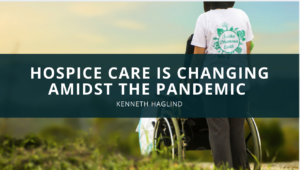Hospice Care is Changing Amidst the Pandemic According to Kenneth Haglind


Kenneth Haglind Discusses How Hospice Care is Evolving with COVID-19 Cases
The COVID-19 pandemic has led to tens of thousands of people being infected around the country. The senior communities are being greatly impacted by the pandemic particularly, leading to hospice care experiencing more pressure than ever before. Ken Haglind, the president of Minnesota Hospice in Lakeville, Minnesota has identified what some of the new changes are.
Kenneth Haglind recommends identifying the resources available to care for someone who has been diagnosed with the coronavirus, particularly if they are a senior citizen. When there are added health concerns with a patient, the disease can be deadly. As such, a higher level of support is needed.
Further, Ken Haglind suggests that the caregivers be careful about their interactions with a patient. When a caregiver is responsible for multiple patients in hospice care, it can lead to accidental exposure of other patients. All it takes is for one patient to have COVID-19 for all of the other patients under the care of the caregiver to be at a higher risk.
Ken Haglind identifies that there are hospice care teams that are exploring symptom management and communicating as new protocols are released from the CDC. Families are also told to be on the lookout for specific symptoms, including fevers, shortness of breath, and a dry cough.

In some instances, elderly individuals who are suspected of having COVID-19 are being refused by hospitals due to insufficient support. Hospice facilities, however, are working to provide comfort packs so that families can care for the sick without risking added exposure being admitted into a hospital.
Kenneth Haglind has modeled Minnesota Hospice under the vision of creating a gold standard for end-of-life care. Additionally, he works to create an environment where caregivers get the support and resources that they need.
With COVID-19, many details are evolving quickly. Kenneth Haglind’s goal is to provide correct information to caregivers and hospice care workers as it is released so that everyone is working together. This includes identifying new symptoms as the virus mutates as well as identifying levels of care. When it looks as though a patient will not recover, it becomes all about providing the most comfortable atmosphere possible. The mission of hospice that never changes is to make sure that the quality of life at the end of one’s life is the primary goal. Comfort, dignity, and choice are afforded to those who are served by hospice.
Anyone who has a loved one who has been diagnosed with COVID-19 or is suspected of having the virus should contact a local hospice to find out what support is being offered in their community, recommends Ken Haglind.
